Humidity is a sneaky enemy for many RVers. I remember when I first moved to Costa Rica and began noticing mold growing on my Chaco sandals within a week.
We weren’t living in an RV at the time, but the need for a dehumidifier was still clear.
Excess humidity can create large-scale problems in your RV. The growth of mold and mildew can compromise the integrity of your RV’s structure, not to mention the hazards they pose to your personal health and the health of anyone that lives in or visits your RV.
For RVers in warm, humid climates, one of the best RV dehumidifiers is an essential accessory.
It will rid your RV of excess moisture, protect the value of your investment, and even help you stay healthier.
But before you rush to purchase your own dehumidifier for your RV, there are several factors which you have to consider to see how good they actually are so that you can streamline your search.
But If you’re lacking the motivation to do some research, don’t worry.
In this article, I’ll walk you through the benefits and features of the best RV dehumidifiers on the market today along our 8 favorite RV dehumidifiers, to help you make the right choice.
At A Glance:Our Top Picks For the Best Best Dehumidifiers for RVs In 2024
Here are the 8 best RV Dehumidifiers to Reduce Moisture and Prevent Damp in Your RV.
Detail Review of 8 Best RV Dehumidifier in 2024
Identifying the absolute best dehumidifier for RVs and campers is a tricky proposition. Like most RV accessories, the ‘best’ largely depends on your specific needs.
That’s why I’ve highlighted more specific functions for which each of these dehumidifiers is best suited Whether you’re living in a camper van, RV, motorhome or travel trailer.
So, let’s have a look at the 8 RV dehumidifiers and find out what makes them the cream of the crop.
1: Best Overall: hOmeLabs Energy Star Dehumidifier
This is the king of dehumidifiers best for full-time RVers that live in super humid climates.
Designed for large scale use, it can remove up to 50 pints of water from the air per day.
It has a 1.8 gallon water tank capacity and compact dimensions so you can set it up out of the way in your RV or camper van.
One of the best features of this RV dehumidifier is its automatic shut-off setting. The settings can easily be updated to your desired moisture rating and then you won’t have to worry about it as the dehumidifier runs its 24-hour cycle.
When the tank is full of water, it will automatically shut off until you empty the tank.
If you don’t want to worry about having to regularly empty the tank, you can purchase a hose and hook it up to the dehumidifier’s drain hose outlet.
Just make sure the other end of the hose goes somewhere you want it to go!
Because RVs are small spaces, I think it’s important that your dehumidifier doesn’t make a bunch of noise and ruin the audio quality of your streaming music and videos.
Fortunately, this one operates quietly so that you can catch every detail of your latest binge-watching obsession.
Things We Like
Things We Don’t Like
2: Most Efficient: OXA Smart Electric Mini Compact
First of all, the cube design is cute, isn’t it? This thing almost looks like it should be able to talk to you and provide regular voice updates on the condition of the humidity in your RV.
But, seriously, it’s an ultra-efficient mini RV dehumidifier built to handle spaces up to 215 square feet in size.
Despite its relatively small size, it can remove up to 350 milliliters of water from the air per day and it has a 650 milliliter tank capacity.
This means that you’ll have to empty it every other day, at most, but it has an automatic shut off feature that keeps it from overflowing until you notice it’s full.
With a draw of just 23 watts, it won’t overwork your RV’s onboard battery. It comes with a sleep mode that reduces the sound it makes to less than 34 decibels.
This is a great feature if you’re a light sleeper who doesn’t like to have much white noise going on while you’re trying to fall asleep.
Things We Like
Things We Don’t Like
3: Best battery operated: Eva-Dry Renewable Mini Dehumidifier
Don’t worry about your electricity requirements with this battery operated RV dehumidifier.
My partner and I actually employed these throughout our house when we lived in Costa Rica.
They worked quite effectively and only needed to be plugged into dry out every other week, and that’s a pretty humid environment down there.
If you have a large RV, I’d recommend buying several of these. You can easily hang them in the closet, shower, pantry, or any other high-humidity areas.
They work best for areas up to 333 cubic feet in size and can absorb up to six ounces of water before requiring recharge.
Depending on humidity levels in your area, you might go anywhere from 20 to 30 days between recharges.
I really liked this dehumidifying solution because these units are 100% eco-friendly and renewable.
They’re also non-toxic and safe for your children or pets. Unlike most of the other dehumidifiers in this article, you won’t have to worry about spilling water in your RV when you go to empty the tank.
Simply plug this unit into a wall outlet and wait until the internal pellets turn clearish yellow again.
Things We Like
Things We Don’t Like
4: Largest Capacity: Frigidaire FFAD7033R1 60 Pint Dehumidifier
This bad boy can pull a whopping 60 pints of water out of the air in a single hot, sweltering day.
It can be set up near a suitable drain and hooked up to hose if you want it to operate continuously.
This will eliminate you having to worry about emptying the contents of the tank when it’s full.
I like the fact that you’re able to set a custom 24-hour, On/Off cycle with this dehumidifier.
I know you won’t need it to run 24/7/365, so you can create your custom schedule to maximize efficiency.
Speaking of efficiency, this unit operates at a low temperature of just 41 degrees Fahrenheit, which serves to reduce its energy draw and save you money.
It does come with a full tank alert and automatic shut-off feature if you’re not around to empty the tank when it reaches capacity.
The unit also displays a digital humidity readout so you can make comparisons to the conditions outside.
The unit is about two feet tall, 15 inches wide, and 11 inches deep, so you should be able to tuck it relatively out of the way in your RV.
Things We Like
Things We Don’t Like
5: Best Thermo-Electric: Ivation IVADM45 Intelligent Dehumidifier
Instead of using a compressor, this Peltier dehumidifier converts electricity into a temperature difference across a Peltier module.
The newly-created temperature difference is what results in dehumidification.
Without getting too technical, this is an efficient method of dehumidifying your RV because it doesn’t require motors, pumps, fluids, oils, or gases.
Because of the lack of a compressor, many thermo-electric dehumidifiers only work in small spaces, and this one is no exception.
It’s made for spaces of 100 square feet or less, so you’ll most likely need at least two if your RV is longer than 20 feet.
That said, these units are less than 14 inches tall, nine inches wide, and seven inches deep, so they won’t take up a lot of space.
Capable of squeezing up to 25 ounces of water out of the air per day, you’ll know when this dehumidifier is full when indicator lights turn on and the unit shuts off.
I do like the fact that it comes with an automatic humidistat function. This allows you to select your preferred relative humidity level and let the unit work for you.
Things We Like
Things We Don’t Like
6: moisture absorber: Camco 44195 Miniature Dehumidifier
This is arguably the most budget-friendly dehumidifier on the market. I like it because it requires basically no setup (other than removing the exterior packaging).
You also won’t have to worry about plugging it in and having it draw off your RV battery all day long.
The Camco dehumidifier claims the ability to absorb up to three times its weight in water.
Ok, so what does that mean? Since the product weight is listed at just over 6 ounces, I have to believe it can absorb somewhere around 18 ounces of water before it is no longer effective. After that, you’ll have to replace it.
That’s not a whole lot of absorption ability for RVers that live in really humid climates.
So this might be a better dehumidifying solution for part-time RVers or those that don’t live in locations with super high relative humidity.
For larger RVs, definitely consider placing multiple of these dehumidifiers throughout your space.
Things We Like
Things We Don’t Like
7: Best Compact: Pro Breeze Electric Mini Dehumidifier for Camper
With dimensions of 11 inches tall, 7 inches wide, and 6 inches deep, you’ll hardly notice this dehumidifier working away in the corner of your RV.
I love the fact that it comes with an automatic shut off feature and a bright LED indicator light to help you notice when the water tank is full.
Speaking of the water tank, it holds a maximum capacity of 16 ounces and this dehumidifier is rated to remove up to 9 ounces of water from the air per day.
Because it’s a compact unit, it is best suited for spaces of 150 square feet or less.
That means that RVs longer than about 19 feet should consider using at least two of these units.
Although it shouldn’t be a problem due to the typical climate in humid places, it should be noted that this dehumidifier doesn’t work well at temperatures below 41 degrees Fahrenheit.
It has an optimal operating temperature range of 59 to 86 degrees Fahrenheit.
Like the Ivation model I mentioned above, this unit relies on thermo-electric cooling, which means it operates without creating a lot of ambient noise.
Things We Like
Things We Don’t Like
8: Quietest RV Dehumidifier: SIMSEN Small Dehumidifier
Sometimes the best part about an RV dehumidifier is that you don’t even notice it’s serving its intended purpose.
With a minimum noise output of just 30dB, this one certainly fits that mold.
For reference, most refrigerators create a white noise output that registers at an average of 50 decibels.
Made for RVers that move about frequently and like to experience a variety of climates, the SIMSEN Upgraded dehumidifier can operate efficiently at temperatures as low as 42 to 48 degrees Fahrenheit.
It has a built-in defrosting function to ensure optimal operation at lower temperatures.
With a water tank capacity of 95 fluid ounces, this dehumidifier can remove up to 34oz(1000ml) of water from the air per day at optimal efficiency.
Like many of these dehumidifiers, a bright LED light will flash orange on this unit when the water tank is full.
At that point, the unit will also shut off until you’re able to remove and empty the tank.
Things We Like
Things We Don’t Like
Features to consider while choosing an RV dehumidifier
As you can see from the dehumidifiers I’ve highlighted above, there’s quite a lot of variety out there.
The best RV dehumidifier for you clearly will depend on a number of factors that are unique to your RV, your location, and your preferences.
In this buying guide, I’m going to dive into the most common things to consider when buying a dehumidifier for your RV.
Choose correct dehumidifier Size for your RV
I’ve chosen size as the first criteria in this buying guide because, as a full-time RVer myself, I know how quickly space becomes limited in an RV.
I even live in a 36-footer and still feel like it’s so essential to be wary of clutter.
Everything needs to have its place and it’s really important to establish daily habits that help you keep your space organized.
When it comes to a dehumidifier, it helps to select a unit that you won’t be constantly tripping over as you move around your RV.
In simple terms, the smaller your RV, the smaller dehumidifying unit you should look for.
For those in larger RVs, you’ll probably get away with having a larger unit because you have more space.
Energy Usage
Energy usage is also incredibly important for RVers, regardless of how many appliances and/or devices you have plugged in.
Adding a dehumidifier to everything that your RV battery (or batteries) is already powering requires careful consideration.
You need to be mindful of not overloading your battery and draining it too far before you have a chance to recharge.
This is one of the reasons why a dehumidifier that allows you to set a 24-hour cycle can be beneficial.
As relative humidity levels change throughout the course of 24 hours, you can program your unit to work less (or more).
In doing so, you’ll be able to reduce overall energy usage and keep your RV batteries sufficiently charged.
What size dehumidifier do I need for my camper?
The capacity you’ll need mostly depends on the size of your RV. Even the largest RVs (up to 45 or 50 feet long) typically have a maximum square footage around 400 feet. So even owners of large RVs might find that a dehumidifier rated for a 1,500 square foot home is overkill.
Start by measuring the square footage of your RV. This will give you a solid number to compare against the amount of space that a given dehumidifier is designed for.
Also make sure to consider the environment in which you’ll primarily be living.
A location with average relative humidity of 95 percent will require a higher-performing dehumidifier than a location with average relative humidity of just 50 percent.
Auto Settings
The ability to “set and forget” a dehumidifier is a great bonus. That’s not to say that it’s difficult to monitor and maintain a dehumidifier, but I’m willing to bet that this isn’t necessarily going to be a passion project for you.
If you feel like you have bigger things to worry about, make sure you choose a dehumidifier with automatic settings so that you won’t constantly have to spend time and energy monitoring it.
Ease of Installation
Fortunately, most of the best RV dehumidifiers fit into the “plug and play” variety.
Once you’ve identified a place for it and made sure there’s a plug nearby (for electric models), you can easily plug it in, dial in your settings, and let it work.
Some models, however, do come with a drain hose outlet. While this is an optional feature, there can be long-term benefits to spending extra installation time to set up a drain hose.
This will eliminate the need to regularly empty the water tank when it’s full.
It will also eliminate the possibility of the unit shutting off for multiple hours if you’re away and the water tank fills to capacity.
Noise Output
If you have trouble sleeping or difficulty hearing your favorite TV shows already, installing a dehumidifier is going to increase the amount of white noise in your RV.
Combined with the refrigerator, water heater, and other ambient noise coming through your RV’s thin walls, it’s important to make sure the dehumidifier you choose isn’t going to turn into an annoying nuisance.
Fortunately, there are several super quiet dehumidifiers that you’ll hardly notice when they’re doing their job.
Even if you need to purchase a larger model that makes more noise, you’ll often be able to program it to turn off for several hours at night so that you can hear your shows and fall asleep easily.
So, is the best dehumidifier for an RV?
To boil it all down, your final choice should depend on the size of your RV, the location where you’ll primarily be living, and your desired comfort level.
If you’ve already spent an incredibly uncomfortable summer sweltering in your RV, you might not hesitate to go for a dehumidifier that’s rated for a larger space than you actually have in your RV.
Do some research on average relative humidity levels in your area. Assess how much energy you’re already using to power your current appliances and devices.
Consider what it feels like to truly feel comfortable in your RV during the hotter months of the year.
Once you gather this personal information, you’ll be much better suited to compare dehumidifiers to your criteria in order to select a model that’s right for you.
Frequently Asked Questions
Just in case I didn’t touch on everything you’re looking to learn about dehumidifiers in the article above, here are some of the most frequently asked questions to consider.
What is the best location for a dehumidifier?
The exact answer to this question depends on the size and layout of your RV. However, two of the best places to set up a dehumidifier are the living room and the bedroom.
Because these are the areas most of us spend the majority of our time in our RV, they are the areas where comfort is most important.
What relative humidity setting should I program into my dehumidifier?
While this is largely a question of personal preference, most recommendations suggest programming a relative humidity setting between 30 and 50 percent.
This, of course, is only possible with a dehumidifier that has a smart humidistat function.
Can I drain my dehumidifier into my RV’s grey water tank?
Most manufacturers of dehumidifiers recommend NOT emptying water from your dehumidifier into your RV’s grey water tank. A dehumidifier pulls harmful bacteria from the air, as well as water.
Some of this bacteria can cause problems with your RV’s internal tanks, so the best method is to water the grass/plants outside of your RV.
Is it safe to allow a dehumidifier to run constantly?
Dehumidifiers are specifically designed to be able to run on 24 hour cycles and are safe to leave on overnight.
However, caution should be exercised with any electronic appliance.
Always be careful to thoroughly review the owner’s manual to make sure you don’t overtax your dehumidifier and cause it to overheat.
How can I tell if I need a dehumidifier?
The first warning sign is discomfort. Maybe it feels like a constant dampness on your skin or maybe it feels like not being able to fall asleep at night because you’re still sweating even though you’re lying absolutely still.
Furthermore, if you begin to smell dampness or mold when inside your RV, it’s definitely time to invest in a dehumidifier.
Conclusion
As an RV owner myself, I know how important it is to make your RV a comfortable space.
I’ve primarily lived in my RV in colder climates and, after a while, I realized that I was willing to pay a little extra for propane to keep my space warm and cozy throughout the winter.
As someone who has also lived in hot and humid climates, I can appreciate the other side of the spectrum.
If I decided to move my RV far to the south of where I’m at now, a dehumidifier would be one of the first items on my list of new accessories to invest in.
I hope you’ve enjoyed this review of the best RV dehumidifiers and I hope you stay cool out there!

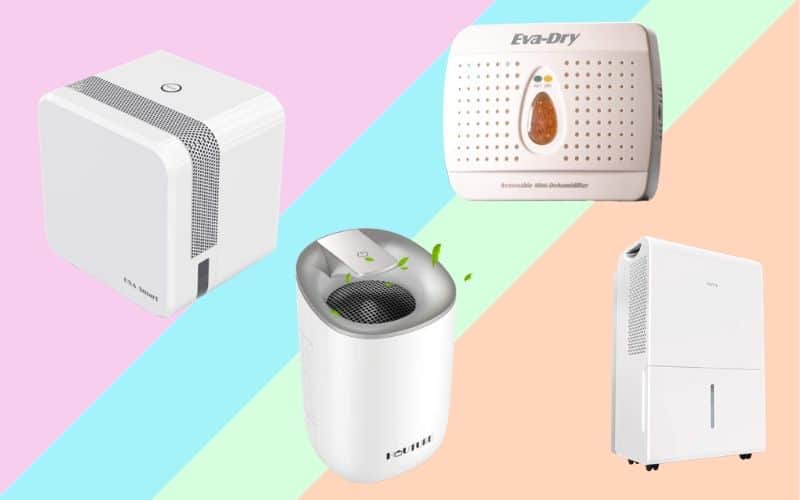


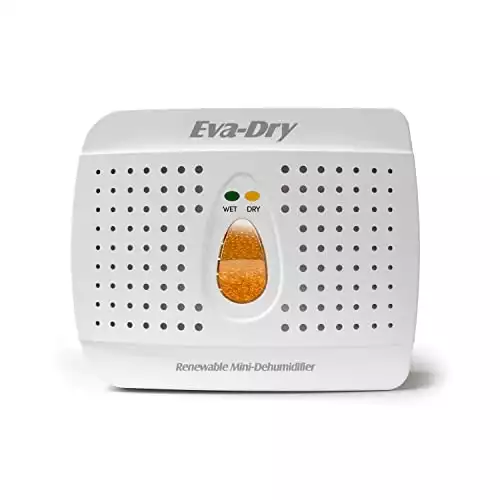

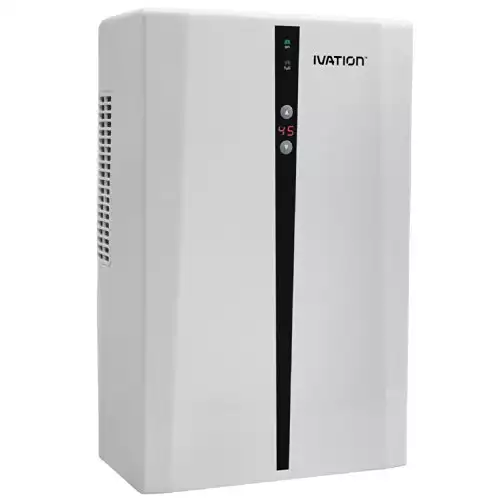

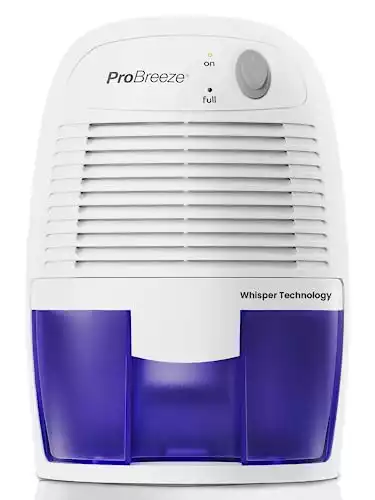




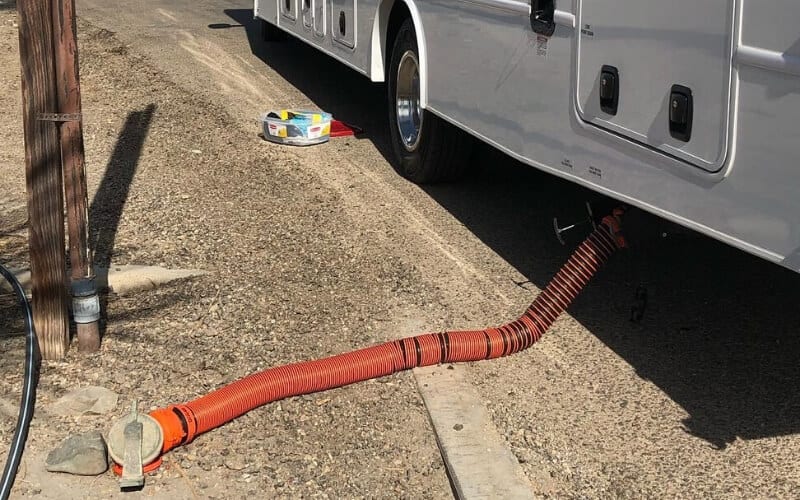
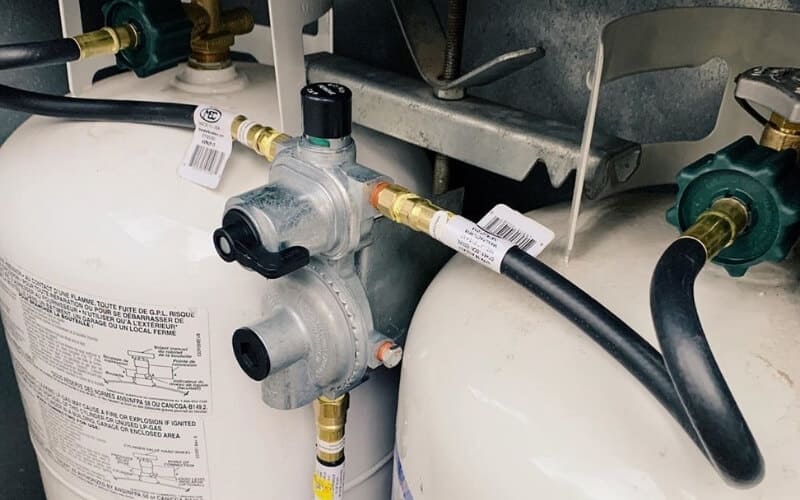
3 Comments
Linda Hobbs
3 years agoExcellent article and reviews. Thank you! RV newbie. Traveled across country in 22 foot Class B. AC worked OK when it was hot and dry during day & cool at night (AZ, New Mexico, Nevada, etc) but really struggled when it was hot and humid (ALA, MS, LA, FL). Does it help to use both a dehumidifier and the AC to cool the RV and sleep better at night in the hot & humid climates?
Aaron Richardson
3 years agoYes, a dehumidifier does help your air conditioner.
Jeanne B
2 years agoI live in south Louisiana. I have a 33 foot class A. I also want to use the dehumidifier while RV is stored. The RV is in a semi enclosed cover. RV is not in the direct sun.
I like to leave a dehumidifier in the RV while not in use.
Some Dehumidifier do not run over a certain degrees. the last unit I got did not work when temp was > 89 degrees.
Do you have any suggestions on what dehumidifier is should be looking for?
Thanks for information about letting condensation to go into gray tank.
Jeanne B